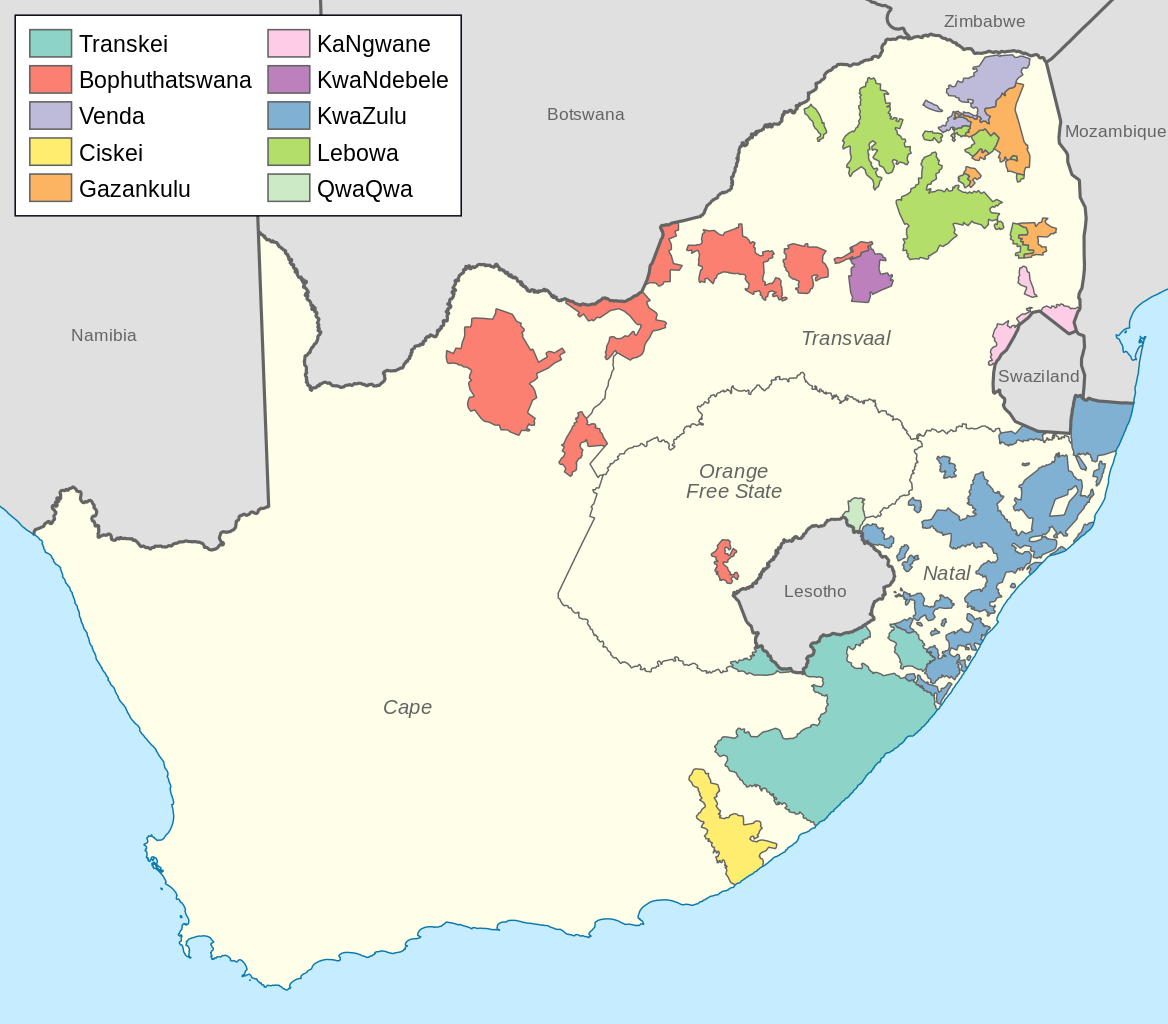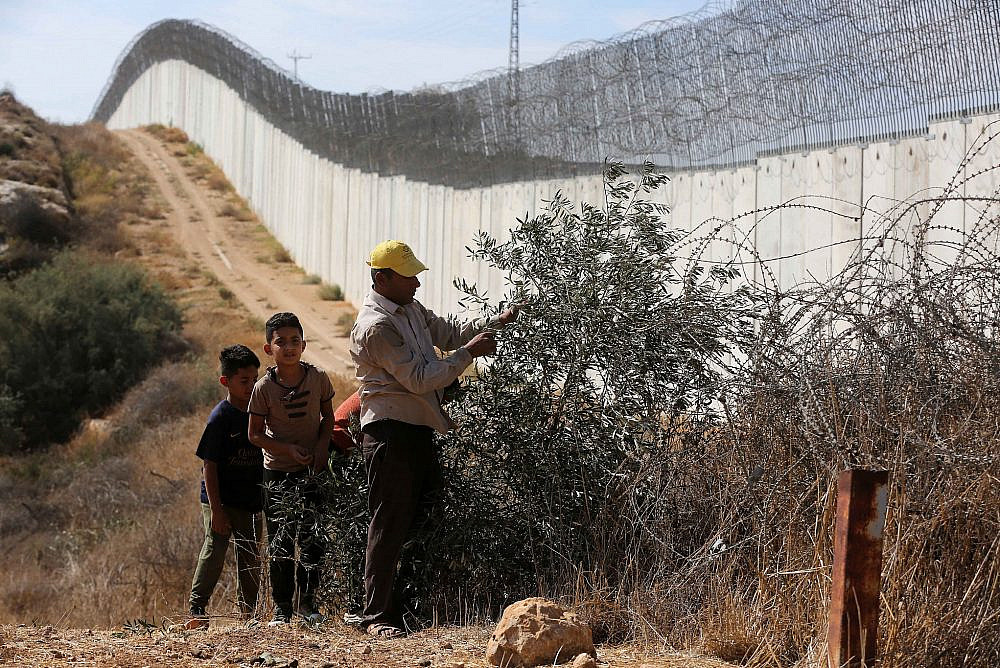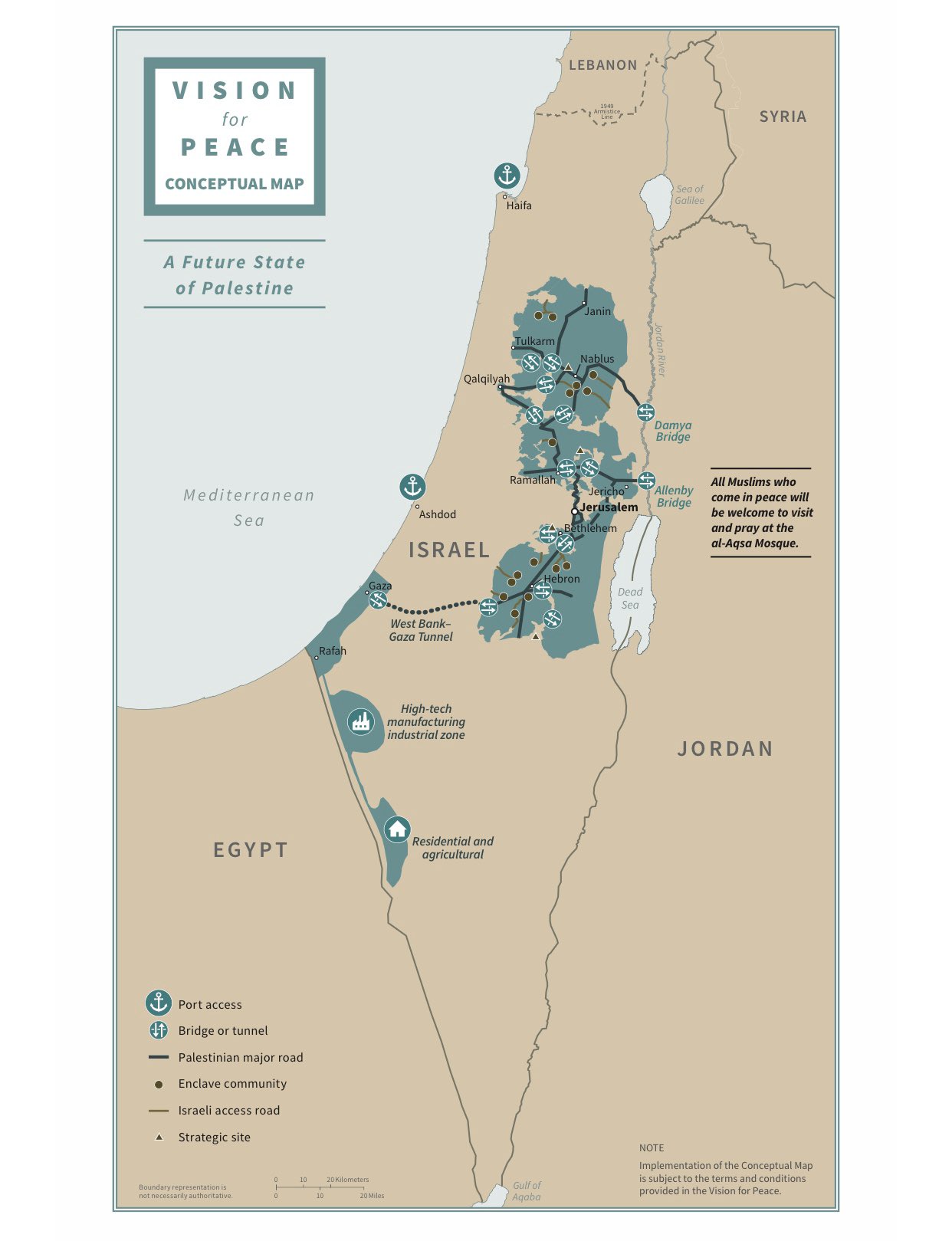The Trump administration’s recently-published “peace plan” claims to propose the recognition of a Palestinian state. But the outline of this purported future resembles an island archipelago surrounded by a sea of Israeli territory, connected by checkpoints and tunnels in place of bridges and ferries.
The patchwork map attached to Trump’s plan is a striking reminder of South Africa’s “Bantustans.” During apartheid, 10 self-governed territories were created within the country’s borders: four of them were nominally independent, and the others were semi-autonomous. These territories were modeled by the government in Pretoria as tribal homelands for the black population whose South African citizenship it had revoked.
Initially legislated in 1951 with an act that recognized tribal chiefs as the legitimate leaders of black society, Bantustans came into being 12 years later with the establishment of Transkei. This territory, explains Laura Phillips, a South African historian who specializes in Bantustan history, acted as a blueprint for the nine territories to follow. Recognized as independent by very few foreign governments, these “states” were, in reality, dominated and financed by the Apartheid regime.
Although presented as decolonized territories and as a part of the anti-colonial movement in wider Africa, the Bantustans lacked the resources and economic opportunities to provide for its residents. Many left to work elsewhere in South Africa, at the risk of subjection to a restrictive permit system and racial segregation, until the Bantustans were abolished with the fall of Apartheid in 1994.
Philips explains that although the “homelands” were entitled to operate a police force (and in the case of the four “independent” Bantustans, an army), they nonetheless lacked security autonomy from South Africa throughout most of apartheid. Financially, they were utterly dependent: up to 70 percent of the budget of the Lebowa Bantustan, for example, was provided by Pretoria. And while some of the Bantustans were territorially contiguous, others were split into multiple fragments.

The effect of the project, according to Phillips, was to weaken and fragment black South Africans and to obscure the huge majority they had over their white neighbors.
Palestine could face a similar fate in the near future.
“The Palestinian state as it is in the [U.S.] plan has no sovereignty, not over its land or resources, or over any characteristic of what a sovereign state should look like,” says Rania Muhareb, a Legal Researcher and Advocacy Officer with the Palestinian NGO Al-Haq.
Numerous factors that form the basis of sovereignty — control over airspace, borders, movement of people, and responsibility for security — are lacking in the Trump administration’s deal for Palestine, says Ghassan Khatib, a professor at Birzeit University and a former Palestinian minister. “It is an enclave within the State of Israel, surrounded on all sides,” he adds, arguing that the deal changed nothing except to relabel that enclave as a state.
Moreover, surrounding every Palestinian city are rings of Israeli settlements, separation barriers, and segregated roads that have been constructed as part of a strategy to prevent Palestinian growth and development. This, explains Lior Amihai, the executive director of Israeli NGO Yesh Din, is the implicit logic of the settlement policy and is designed to fragment the West Bank.
Equally, says Alliance for Middle East Peace head John Lyndon, freedom of movement and economic opportunity go hand-in-hand. A future Palestinian state will need space and accessibility for its population to organically grow and move to other parts of their country where opportunity presents itself.
Palestinians would thus remain economically stifled if checkpoints remain and if an Israeli army-run tunnel is the only point of access between Gaza and the West Bank. “If the residents of a country cannot move around it without permission from a foreign military, not only is that not sovereignty, it is military occupation,” notes Lyndon.
Muhareb suggests that Trump’s plan is not itself creating Bantustans out of the West Bank and Gaza, but rather is recognizing and legitimizing a long-term Bantustan policy as implemented by the Israeli government. The deal “largely resembles the situation as it is today on the ground. There is no difference in the plan being put forward and the facts as they have been set in place over the last 70 years,” she argues.
Amihai agrees, noting that the ideology of the settler movement and the right-wing Israeli government appear to have served as the basis for Trump’s “Vision for Peace.” Inherent in this ideology is the aim of preventing Palestine’s formation as a state and denying any form of Palestinian self-determination, he says.
Is it useful to compare what is taking place in Israel and the Palestinian territories today, to a racist societal experiment that took place in another continent decades ago?
Khatib, for one, stresses the similarities between apartheid South Africa and Israel’s policies today. “Israel is trying to put as many Palestinians in as little of the available territory [as it can manage],” he says.
Amihai, too, sees the likeness. Whether the label is comfortable or not for Israelis, their government has intentionally advocated a Bantustan policy, says Amihai says, adding “they do not want a Palestinian state. They do not believe Palestinians are deserving of full equal rights.”
Lyndon questions the value of the apartheid or any other comparison in a case as unique as the Israeli-Palestinian conflict. He likens it instead to gerrymandering, a segregationist strategy seen in a range of political conflicts as disparate as the Northern Ireland Troubles to racist urban planning in the U.S.

Phillips, while noting she was not an expert on Middle East politics, admitted there were similarities between the maps of the Palestinian territories and South Africa’s 10 Bantustans. “In terms of the fairness of the division of land… looking at the map of Israel and Palestine today, I would say that it looks worse than how it looked in South Africa.”
The ideologues behind apartheid did not invent the concept of Bantustans alone; in fact, they were inspired by the segregation they saw in the United States and Canada on Native reservations.
Apartheid has long since surpassed the purely South African context and is an internationally recognized crime, including under the 1973 UN Convention on the Suppression and Punishment of the Crime of Apartheid, and the 1998 Rome Statute. Any government that operates two separate legal systems for different ethnic or nationalist groups risks violating this law.
Israel, however, never ratified the UN convention on Apartheid or the Rome Statute, meaning it cannot be prosecuted for breaching it.
In its essence, the security apparatus as it exists in the West Bank is apartheid, says Amihai. The only argument against such an assertion is if the occupation is temporary for security needs – which after 52 years, can hardly be considered so.
As such, the main fallout from the Trump deal could be its recognition of the permanence of the annexation of land taken by Israel. “Once the government admits that it is not moving to end the occupation, then this closes the argument of whether or not apartheid exists in the occupied territories,” says Amihai.
The U.S. Embassy in Israel declined to immediately respond to a request for an interview.


